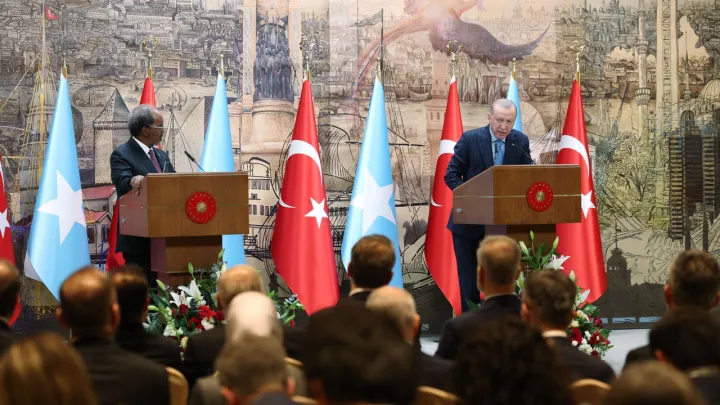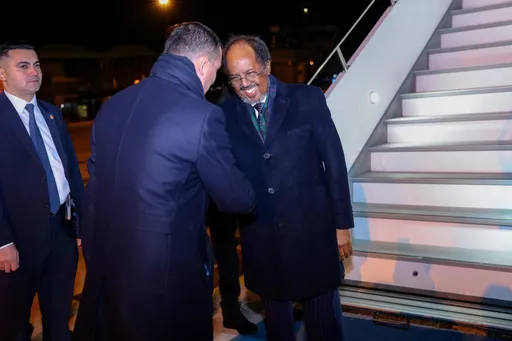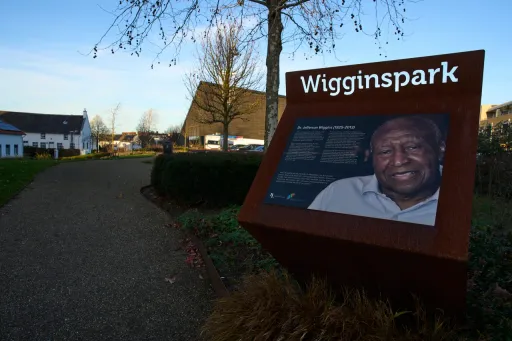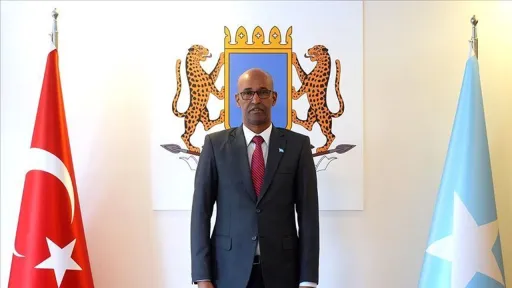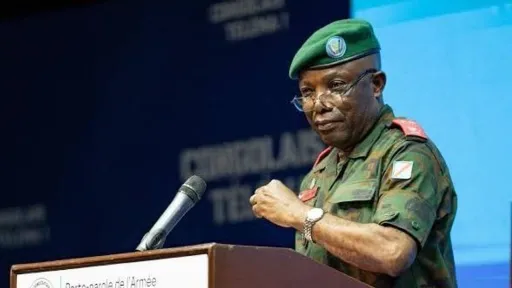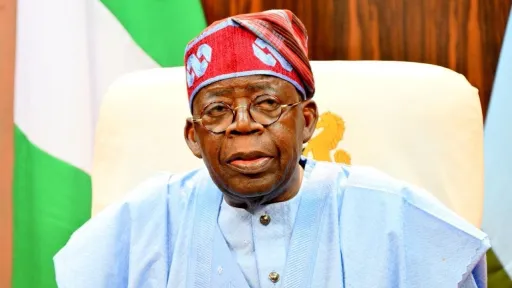Despite a number of military interventions, which interrupted Turkish political life in 1960, 1971, 1980, 1997 and 2007, Türkiye has been able to hold largely democratic elections since the country’s transition to a multi-party system in 1950.
From the formation of the Turkish Republic in 1923 to 1950, Türkiye was led by one party that was co-founded by the country's founding father Mustafa Kemal Ataturk, who passed away in 1938.
The elections in this period were largely ceremonial because only unchallenged CHP candidates had a chance to win seats in Turkish parliament.
But that changed with the 1950 election, in which a number of parties could run their candidates in a democratic poll and the Democrat Party, a conservative political leadership, came to power with a big majority.
Since then conservative parties have dominated Turkish politics while the CHP, a leftist party, could not get most votes (except in a few cases), remaining the main opposition in parliament.
In May, the country will face another crucial election cycle in its history.
Here is how Türkiye’s elections have evolved in last hundred years:
Ottoman legacy
Türkiye’s election history has its roots in the Ottoman Empire, the predecessor state to the Turkish republic, which controlled much of the Middle East and significant territories across the Balkans in the 19th century. The empire was in a declining state in the late 19th century, when Ottoman statesmen thought that reforming the multi-ethnic and multi-religious empire’s political structure was the only way to prevent its disintegration.
In 1876, as a result of the Ottoman reform program, the empire turned into a constitutional monarchy with a parliament and of course elections. The first polls were held respectively in 1876 and 1877, when the parliament passed an election law, which had been in effect until 1943 even during the Republic period.
But this parliament could not function much for various reasons and Ottoman Sultan Abdulhamid II suspended it until 1908, when the second Constitutional Era began after the Committee of the Union and Progress (CUP), the political wing of Young Turks, and its military allies came to power.
Following the 1908 elections, the Ottoman parliament was reopened in Istanbul as the CUP-aligned candidates won most elections across the empire. While the CUP claimed to be a reformist group, they resorted to aggressive suppression tactics to repress their political opponents. The CUP also manipulated elections by using state power and other means to elect their candidates to win an absolute majority in parliament.
After 1913, the CUP formed a one-party rule and steered the country all the way through World War I.
Wartime elections
At the end of WWI, the Allied powers invaded most of the Ottoman territories. In 1919, Mustafa Kemal led the Turkish Independence War against the British-French occupying powers. Although the invading powers took pride in having democratic governments, they closed the Ottoman parliament and exiled most of its deputies in 1920.
The same year Ataturk and his supporters called another parliament to be gathered in Ankara, a non-occupied city, and urged an election to be held across non-occupied territories for this Ankara-based assembly. The parliament was formally named Grand National Assembly, the same title the current Turkish state uses to describe its legislative body.
With the 1920 election, deputies were elected for the Ankara-based assembly as free MPs of the Istanbul-based Ottoman parliament also joined the new legislative body in the central Anatolian city, which became the Turkish capital later. This election was crucial because the Ankara-based assembly successfully led the Independence War against occupying forces.
Another crucial election happened in June 1923 prior to the declaration of the Turkish Republic in October the same year, which also marked the transition from the empire to the Republic.
This war assembly had an unprecedented democratic nature due to the existence of the two political factions called the First Group and the Second Group, which had opposing positions in regard to the direction of Türkiye. The Grand National Assembly won the Independence War, but these two factions had different opinions on the prospects of the peace deal with the Allied Powers.
While the Mustafa Kemal-led First Group advocated the approval of the Treaty of Lausanne, the Second Group, dominated by conservative politicians, opposed this measure. As a result, Mustafa Kemal and his supporters dissolved the assembly, calling for a new election to have a pro-peace majority in parliament.
Mustafa Kemal’s First Group, which named itself as People’s Party after the election, gained a big majority in parliament because the Second Group boycotted the poll, claiming the assembly’s dissolution to be unconstitutional. In three months following the election, the parliament approved the Treaty of Lausanne and declared Türkiye as a republic, ending the Ottoman rule.
In 1924, the People’s Party changed its name to Republican People's Party (CHP).
1923-1950: elections under one-party rule
The 1923 election had crucial effects starting the CHP’s one-party rule, which did not face any opposition party in the next five elections in 1927,1931,1935,1939 and 1943. Opposition groups like the Progressive Republican Party and Free Republican Party just briefly existed as both parties were closed down and could not participate in any elections.
Mustafa Kemal Ataturk was also elected as president four times by the parliament. After Ataturk’s death, the one-party rule continued under Ismet Inonu, Türkiye’s second president, who was also elected to the presidency four times by the parliament.
Following WWII, Türkiye’s one-party rule paved the way for the formation of other parties and for the first time ever since the founding of the Republic, opposition parties like Democrat Party (DP), whose founders were former CHP members, were allowed to run against the CHP. This marked the country’s transition to a multi-party system.
While other parties were allowed to run in the 1946 election, the CHP used many pressure tactics against the DP, a conservative party, which was a great inspiration for Türkiye’s current President Recep Tayyip Erdogan to form his AK Party in 2001, before and during the controversial poll.
As a result, many call the 1946 poll “the rigged election”. Prior to the election, the CHP also passed an election law, which had some anti-democratic principles according to many analysts.
The 1950 election
Despite CHP’s suppression tactics, the rise of the DP was inevitable and the 1950 election showed it clearly as the conservative party enjoyed a big majority in parliament under Adnan Menderes’s leadership. This also represented, as leading Turkish-American historian Kemal Karpat observes, “the turning point in Turkish political and social life”.
During the election campaign, the DP’s poster, which showed a hand accompanied by a text saying that “Enough! People have the right to decide”, made an enormous effect on regular citizens living under the CHP rule for nearly three decades. “Even CHP supporters were affected by the poster,” wrote Mehmet Oznur Alkan, a professor of political science at Istanbul University.
Following the 1950 election, the DP won the two back-to-back elections in 1954 and 1957 as its parliamentary majority elected Celal Bayar, a co-founder of the conservative party, to the presidency three times. But in 1960, the country’s first military coup interrupted the DP’s rule.
1960-1980: coups and elections
The 1960 coup closed down the DP and jailed its top lawmakers and officials. It also led to the execution of Prime Minister Adnan Menderes, Finance Minister Hasan Polatkan and Foreign Minister Fatin Rustu Zorlu. As a whole, the coup traumatised the Turkish political system.
Eventually a new election law was enacted, embracing the D’Hondt system. This involved proportionately allocating seats, according to received votes in different election areas. The same electoral system largely remains in place in Türkiye.
Despite the brutal coup, conservative parties won the most votes in the 1961 election. The Justice Party (AP) under Suleyman Demirel, a center-right politician who led different conservative governments from the 1960s to the 1990s, claimed to be the continuation of the DP political line.
The AP went on to win the next two elections in 1965 and 1969, gaining majorities in parliament and forming conservative governments under Demirel. But another military intervention in 1971 interrupted the second Demirel government, inflicting another blow to Turkish democracy.
The 1971 military memorandum led to a process of coalition governments. Demirel’s collaboration with army leaders following the 1971 military memorandum cost him a lot as no party under his leadership could not win a majority in any elections since then. The CHP under Bulent Ecevit, a rising leftist leader, came first in the 1973 election, forming a short-lived coalition government with National Salvation Party (MSP) – a conservative political faction.
Until the 1977 election, inconclusive like the 1973 poll, either minority or coalition governments led Türkiye. This continued to be the case until the 1980 coup, which would dismantle the whole Turkish political party system, closing down all parties.
From the 1980s to the 2000s: the return of coalitions
After the 1980 coup, the first election was held in 1983 and the Motherland Party (ANAP) under Turgut Ozal, a conservative politician with roots in the MSP like Erdogan, won a parliamentary majority. Ozal’s party won another mandate in the 1987 election. In Ozal’s victories the 10 percent election threshold, which was brought by coup-aligned lawmakers in 1983 to enhance political stability, also played a critical role.
But after Ozal was elected to the presidency, ANAP began declining and lost the next election in 1991. Between 1991 and 2002, when the AK Party came to power with a landslide victory, no party could claim a majority in parliament in 1995 and 1999 elections. Coalition governments dominated the Turkish political landscape.
2002-2023: the AK Party victories
Under Erdogan’s leadership, AK Party claimed Turkish mainstream politics, winning back-to-back elections in 2002, 2007 and 2011. While the AK Party lost its parliamentary majority in the June 2015 election, it quickly regained its majority in the November election of the same year. The re-election was held as winning parties were unable to form a government, leading to a deadlock.
In 2014, Erdogan was elected to the presidency for the first time by popular vote after a 2007 constitutional amendment, which formalised the rule of electing presidents by popular vote.
After changing the parliamentary system to a presidential model with the 2017 referendum, Erdogan won another presidential election in 2018 as the People’s Alliance, made up of the AK Party and National Movement Party (MHP), achieved a majority in parliament.
With the 2023 presidential and parliamentary elections slated in mid-May, it remains to be seen what shape the Turkish political landscape will take, as the AK Party-led alliance enters yet another electoral race with a six-party-led alliance led by CHP.
Suleyman Demirel (on the left), one of Türkiye's conservative icons, collaborated with the 1971 military intervention, which inflicted a big blow to his political prospects.
Türkiye's Grand National Assembly was first opened in Ankara on April 23, 1920 after the British-French occupying powers invaded Istanbul, the capital of the Ottoman Empire.
The first Ottoman parliament was constituted in 1876 in Istanbul's Dolmabahce Palace, but it could not last long.
Mustafa Kemal Ataturk, the first president of Türkiye, speaks during the Fourth Convention of Republican People's Party (CHP) in 1935.
Turgut Ozal, the founder and leader of the Motherland Party, played a critical role in Türkiye's transition to a democratic rule after the 1980 coup.
Despite a number of military coups, Türkiye has had free elections since 1950 when the country moved to a multi-party system as the Democrat Party won a landslide victory.


